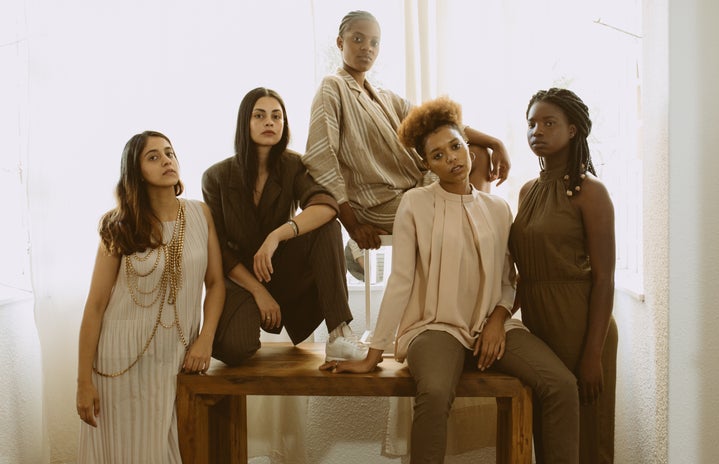When asked what it means to be a woman, most tend to think about genitalia. Some believe that your gender is just an identity that was given to you at birth and to others, being a woman means sharing the same troubles of living in a patriarchy. In the past year, I’ve started to see a different spelling of women online: ‘womxn’. At first, I thought it was a typo, but it started appearing more and more on my feed, and creators I follow began to call women ‘womxn’. I came to the realization that the creators using this term are cisgender– but I never saw any transgender women using it. So I began to question what it meant and what the difference is between being a woman and a womxn.
It turns out that to some this new term is fitting, but to others, such as trans women and nonbinary people, it’s actually alienating.
According to Dictionary.com, womxn is defined as “a woman (used, especially in intersectional feminism, as an alternative spelling to avoid the suggestion of sexism perceived in the sequences m-a-n and m-e-n, and to be inclusive of trans and nonbinary women).” By removing the suffixes -men or -man, womxn are releasing themselves from their relationship with men. They are quite literally deleting men from their identity.
‘Womxn’ (pronounced as wo-minx) is the inclusive version of the traditional word ‘woman/women’. This new term is used as a way for those who don’t align with the traditional meaning of ‘woman’ to reclaim their relationship with womanhood. In the past, the meaning of being a woman typically left out the experiences of transgender women, Black women, WOC, and any other identities that are pushed aside. So, when this identity was created in the 1970s, it was meant to be inclusive to all women and separate them from the exclusionary version of feminism. It broadens what being a woman means by understanding that not all womxn have the same experience as white, cisgender women. Just recently, people started to categorize nonbinary people with ‘womxn’.
Using ‘womxn’ allows a space for some women to find their identity outside of the patriarchy and not have it be in relation to men.
However, despite being told that ‘womxn’ is inclusive, we still have to consider the intention behind it: is it really inclusive? The former chair of Trans Media Watch, Jennie Kermode, expressed, “We would generally just write women in the usual way because we feel it’s important for people to recognize that trans women are women. Trans women aren’t a special, separate category.” When you state that trans women are now ‘womxn’, you’re declaring their identity for them and excluding them from the womanhood community. This leads to the belief in some that transwomen aren’t real women. Transwomen shouldn’t be separated from what it means to be a woman. And just as transwomen are real women, nonbinary people are nonbinary. If you are calling a nonbinary person a ‘womxn’ then you are doing the complete opposite of what they want: forcing them into a gender binary. Simply put, you are erasing these identities and confining them.
For some, being a womxn is inclusive and helps to claim their power back. For others, it puts them in a separate box, furthering them from belonging to the community. It is everyone’s choice to identify themselves as they feel; identifying as ‘womxn’ doesn’t diminish the experiences that other identities went through, but it is a step for those to reclaim their identity. As always, it is best to ask what labels and pronouns an individual uses to ensure validity. We must be conscious of the meaning behind our words and to not label people without their consent.


